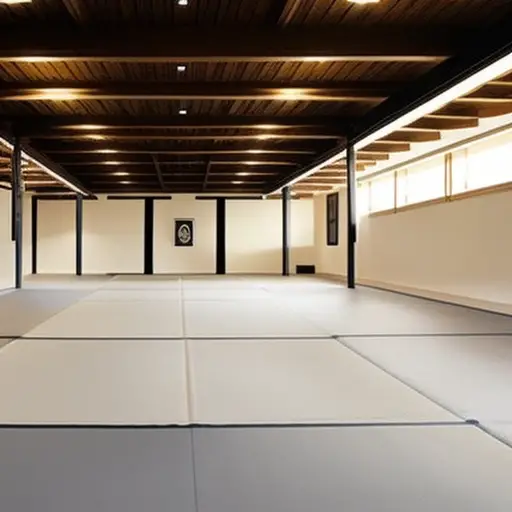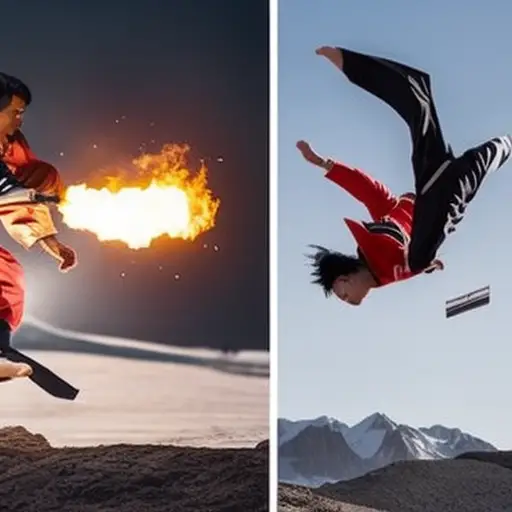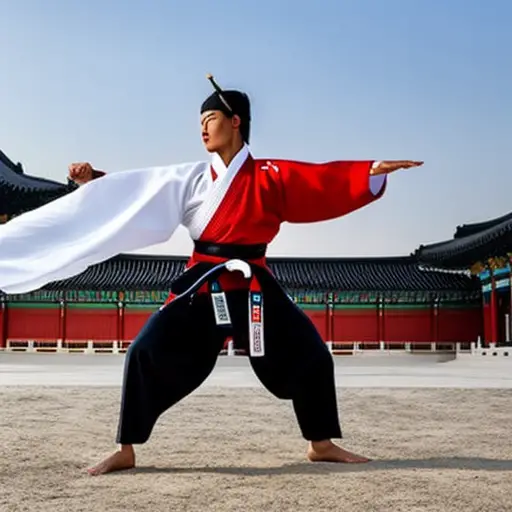Iconic Taekwondo Masters and Their Legacies

Prepare to be inspired by the extraordinary legacies of Taekwondo’s iconic masters.
Through their unwavering dedication and unparalleled skill, these remarkable individuals have left an indelible mark on the world of martial arts.
Grandmaster Choi Hong Hi, Grandmaster Jhoon Rhee, Grandmaster Hwang Kee, Master Kim Un-yong, Grandmaster Park Jung Tae, and Master Lee Duk Hee have each played a pivotal role in shaping the discipline of Taekwondo, transcending boundaries and empowering generations to reach new heights of physical and mental prowess.
Join us as we delve into their remarkable stories of triumph and perseverance.
The Legacy of Grandmaster Choi Hong Hi
One cannot underestimate the impact and contributions of Grandmaster Choi Hong Hi to the world of Taekwondo. His legacy is one that has left an indelible mark on the martial art and has shaped it into what it is today.
Grandmaster Choi Hong Hi is widely regarded as the founder of Taekwondo, having developed the art in the 1940s and 1950s. His vision and dedication to promoting Taekwondo as a global sport have had a profound impact on its growth and popularity.
The legacy of Grandmaster Choi Hong Hi can be seen in the widespread adoption and recognition of Taekwondo as an Olympic sport. His efforts in promoting the art led to its inclusion in the 1988 Seoul Olympics, marking a significant milestone in the history of Taekwondo. Today, Taekwondo is practiced by millions of people worldwide and is known for its dynamic kicks and fast-paced movements.
Furthermore, Grandmaster Choi Hong Hi’s impact on modern Taekwondo can be seen in the establishment of the International Taekwon-Do Federation (ITF). Under his leadership, the ITF became the governing body for Taekwondo and played a crucial role in standardizing the art and its techniques. His tireless efforts in promoting Taekwondo globally have ensured its longevity and continued growth.
Transitioning into the subsequent section about Grandmaster Jhoon Rhee, it is important to recognize how these two masters have shaped the world of Taekwondo with their groundbreaking contributions.
Grandmaster Jhoon Rhee: Pioneering Taekwondo in America
Not only did Grandmaster Jhoon Rhee pioneer Taekwondo in America, but he also made significant contributions to the development and popularization of the martial art in the country. Known as the ‘Father of American Taekwondo,’ Rhee played a crucial role in introducing and spreading Taekwondo throughout the United States.
One of Rhee’s most notable achievements was his innovation of techniques within Taekwondo. He believed in adapting martial arts to fit the needs and abilities of individuals, which led him to develop a unique teaching style that emphasized speed, agility, and precision. Rhee’s innovative techniques, such as his use of the sidekick and his emphasis on quick counterattacks, revolutionized the practice of Taekwondo in America and influenced practitioners around the world.
Furthermore, Rhee played a pivotal role in expanding Taekwondo’s reach in America. He established the first official Taekwondo school in the United States in 1962 and went on to open numerous schools across the country. Through his teaching and promotion of Taekwondo, Rhee not only trained countless students but also inspired a new generation of instructors who continued to spread the art.
Grandmaster Jhoon Rhee’s dedication to innovating techniques and expanding Taekwondo’s reach in America has left a lasting impact on the martial art. His legacy as a pioneer in introducing and popularizing Taekwondo in the United States is undeniable, and his contributions continue to shape the practice of Taekwondo today.
Grandmaster Hwang Kee and the Birth of Moo Duk Kwan
Grandmaster Hwang Kee is renowned for his contribution to the martial arts world through the creation of Moo Duk Kwan.
Moo Duk Kwan, meaning ‘Institute of Martial Virtue,’ is a traditional Korean martial art that emphasizes discipline, respect, and self-improvement.
Hwang Kee’s legacy lies in his dedication to preserving and promoting the principles of Moo Duk Kwan, which continues to inspire and shape the lives of practitioners worldwide.
Hwang Kee’s Martial Art
When and how did Hwang Kee develop his martial art, leading to the establishment of Moo Duk Kwan?
Hwang Kee, a prominent figure in the history of taekwondo, developed his martial art during the early 20th century. Drawing inspiration from his encounters with various martial arts styles, including Chinese influences, Hwang Kee formulated his own unique philosophy of martial arts.
This philosophy emphasized the cultivation of the mind, body, and spirit, and focused on techniques that were practical and effective in real combat situations. Hwang Kee’s influence on modern taekwondo cannot be overstated.
His teachings, which emphasized discipline, respect, and self-improvement, laid the foundation for the development of Moo Duk Kwan, one of the most reputable and influential taekwondo organizations in the world. Today, Moo Duk Kwan continues to preserve and promote Hwang Kee’s martial art, ensuring its legacy lives on.
Legacy of Moo Duk Kwan
With the establishment of Moo Duk Kwan, the martial art world witnessed the birth of a legacy that would forever be tied to Grandmaster Hwang Kee.
Moo Duk Kwan’s impact on modern Taekwondo cannot be overstated. Under Grandmaster Hwang Kee’s guidance, Moo Duk Kwan became a driving force in the development and popularization of Taekwondo.
The organization’s emphasis on physical fitness, self-defense, and discipline attracted a large number of students, and its structured curriculum became the standard for many Taekwondo schools.
Furthermore, Moo Duk Kwan’s techniques and principles have had a profound influence on other martial arts. The emphasis on powerful strikes, fluid movements, and the integration of both hard and soft techniques have been adopted and incorporated into various martial arts styles around the world.
The enduring legacy of Moo Duk Kwan continues to shape and inspire practitioners of Taekwondo and other martial arts disciplines.
Master Kim Un-yong: Elevating Taekwondo to the Olympic Stage
As a key figure in the development of taekwondo, Master Kim Un-yong played a pivotal role in elevating the martial art to the Olympic stage. His efforts were instrumental in achieving Olympic recognition for taekwondo and establishing it as an internationally recognized sport.
Master Kim Un-yong’s influence on taekwondo’s journey to the Olympics cannot be overstated. As a member of the International Olympic Committee (IOC) and the World Taekwondo Federation (WTF), he worked tirelessly to promote the sport and gain recognition from the Olympic governing body. Through his diplomatic skills and strategic vision, he successfully convinced the IOC of taekwondo’s merits and secured its inclusion in the Olympic program.
Furthermore, Master Kim Un-yong’s international influence extended beyond the Olympic stage. He played an integral role in expanding taekwondo’s global reach and popularity. As the president of the WTF, he implemented initiatives to enhance the sport’s visibility and accessibility worldwide. He established training centers, organized international competitions, and facilitated the exchange of knowledge between different taekwondo communities.
Master Kim Un-yong’s legacy in taekwondo is one of remarkable achievements and lasting impact. His dedication and perseverance brought taekwondo to the world stage, elevating it from a traditional martial art to an Olympic sport. Today, taekwondo continues to thrive and inspire millions of practitioners worldwide, thanks to the visionary leadership of Master Kim Un-yong.
Grandmaster Park Jung Tae: The Master of Speed and Agility
Renowned for his lightning-fast movements and unparalleled agility, Grandmaster Park Jung Tae is a true master of speed and agility in the world of taekwondo. Throughout his illustrious career, Grandmaster Park has demonstrated exceptional technique and a unique ability to move swiftly and gracefully, earning him the title of ‘The Master of Speed and Agility.’
To achieve such mastery, Grandmaster Park has employed a range of training methods, honing his skills and pushing the boundaries of what is possible in taekwondo. His dedication to mastering technique is apparent in every aspect of his training, from his precise footwork to his lightning-quick kicks.
Here are some key points that highlight Grandmaster Park’s approach to training:
-
Emphasis on speed: Grandmaster Park understands the importance of speed in taekwondo and has developed specific training methods to enhance his quickness and reaction time.
-
Dynamic footwork: His agility is a result of countless hours spent perfecting his footwork, allowing him to swiftly maneuver around opponents and create openings for attacks.
-
Plyometric exercises: Grandmaster Park incorporates plyometric exercises into his training routine to improve his explosive power and agility.
-
Visualization techniques: He utilizes visualization techniques to enhance his mental focus and reaction speed during fights.
Through his dedication, Grandmaster Park has become an icon in the taekwondo community, inspiring future generations to strive for speed, agility, and technical excellence.
Master Lee Duk Hee: Breaking Barriers for Women in Taekwondo
Master Lee Duk Hee, a trailblazer in the world of taekwondo, shattered barriers for women in the sport, paving the way for future generations of female practitioners. Gender equality in martial arts has been a long-standing issue, with women historically facing numerous obstacles in their pursuit of success. However, Master Lee Duk Hee defied societal norms and cultural expectations, proving that women are equally capable of excelling in taekwondo.
Master Lee Duk Hee’s achievements in taekwondo are remarkable. She not only became the first woman to attain the rank of 9th dan, but she also made significant contributions to the development and promotion of taekwondo worldwide. Through her dedication, skill, and determination, she demonstrated that gender should never be a barrier to success in sports.
Master Lee Duk Hee’s influence extended beyond the realm of taekwondo. Her accomplishments inspired countless women to pursue their dreams and break barriers in various sports disciplines. She became a symbol of empowerment and resilience, showing that women have the strength and ability to excel in any field they choose.
Thanks to Master Lee Duk Hee’s groundbreaking achievements, the taekwondo community has seen a significant increase in female practitioners and a greater focus on gender equality. Her legacy continues to inspire and motivate future generations of female athletes to push boundaries and challenge societal norms, ultimately creating a more inclusive and equal sporting landscape.
Frequently Asked Questions
What Is the Significance of Grandmaster Choi Hong Hi’s Legacy in the Development of Taekwondo?
The significance of Grandmaster Choi Hong Hi’s legacy in the development of Taekwondo lies in his establishment of the International Taekwon-Do Federation and the standardization of techniques, patterns, and grading systems, which greatly contributed to the global recognition and growth of the martial art.
How Did Grandmaster Jhoon Rhee Contribute to the Spread of Taekwondo in America?
Grandmaster Jhoon Rhee made significant contributions to the spread of Taekwondo in America. His innovative teaching methods, emphasis on self-defense, and charismatic personality helped popularize Taekwondo and establish its presence in the American martial arts scene.
What Is the Story Behind the Birth of Moo Duk Kwan and Grandmaster Hwang Kee’s Role in It?
The birth of Moo Duk Kwan is a pivotal moment in the history of Taekwondo. Grandmaster Hwang Kee played a significant role in its establishment, laying the foundation for the future success of Taekwondo, including its elevation to the Olympic stage.
How Did Master Kim Un-Yong Play a Pivotal Role in Elevating Taekwondo to the Olympic Stage?
Master Kim Un Yong played a pivotal role in elevating Taekwondo to the Olympic stage. His impact on Olympic Taekwondo was significant, as he worked tirelessly to promote the sport and ensure its inclusion in the Olympic movement.
What Are the Unique Attributes and Achievements of Grandmaster Park Jung Tae That Make Him Known as the Master of Speed and Agility?
Grandmaster Park Jung Tae is renowned for his unique attributes of speed and agility in the realm of Taekwondo. His achievements in this field have earned him the title of "Master of Speed and Agility."
Conclusion
In conclusion, the legacy of these iconic taekwondo masters is one of immense influence and contribution to the sport.
Each master has left a lasting impact on the development and popularization of taekwondo, both in their respective countries and on a global scale.
Their dedication, skill, and innovation have paved the way for future generations of practitioners, shaping the sport into what it is today.
Like pillars of strength and inspiration, their legacies stand tall, guiding and inspiring taekwondo enthusiasts to reach new heights.





